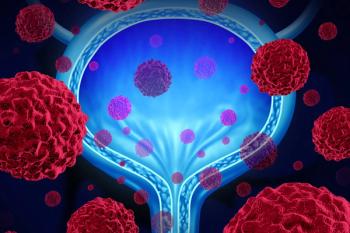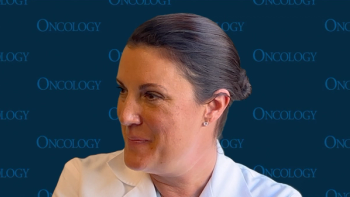
FDA ODAC Votes 5-to-4 Against UGN-102 Intravesical Solution for Bladder Cancer
ODAC has voted against the use of UGN-102 intravesical solution for patients with advanced bladder cancer.
Based on a vote of 5-to-4, the FDA Oncologic Drug Advisory Committee has voted against a benefit/risk ratio of UGN-102 (mitomycin) for patients with low-grade intermediate-risk non-muscle invasive bladder cancer.1
“I voted no. I was really thinking about the risk. It was harder to compare than apples and oranges since these are different procedures, but the benefit was very hard to ascertain given the wide heterogeneity. This was also a missed opportunity to run a randomized control trial given the frequency of the disease and the commonness of the procedure,” Neil Vasan, MD, a physician-scientist in the Department of Medicine at the Herbert Irving Comprehensive Cancer Center at Columbia University Irving Medical Center, stated.
The decision comes based on results from the
A total of 245 patients were enrolled, and all were given 1 or more doses of UGN-102, with 95% completing all 6 weekly doses. The median patient age was 70.0 years, with 68% being 65 years or older, 61% were male, and 98% were White.
At 3 months, a CR was achieved in 80% (95% CI, 73.9%-84.5%) of patients. For those who achieved a CR, the probability of remaining in CR for the following 12 months was 82% (95% CI, 75.9%-87.1%). The duration of response (DOR) after the 3-month CR at 15 and 18 months was 81% (95% CI, 73.9%-86.2%).
At a median follow-up of 13.9 months, the median DOR was not estimable. After 15 months of starting treatment, 61% (95% CI, 54%-67%) of patients maintained a CR. Regarding disease-free survival, the Kaplan-Meier estimate was 76% (95% CI, 69.7%-81.1%) at 15 months.
Treatment-emergent adverse effects (TRAEs) occurred in 57% of patients, and 14% had grade 3 or higher events. In the period up to 3 months, TEAEs occurred in 50% of patients, and in the period after 3 months in 32%. TEAEs were not resolved in 24% of patients, and the most common were dysuria and fatigue.
TEAEs leading to treatment discontinuation occurred in 2.9% of patients, and 2.5% had TEAEs leading to study discontinuation, but none of which were related to the study procedure.
The most common TEAEs included dysuria (23%), hematuria (8.3%), urinary tract infection (7.1%), pollakiuria (6.7%), fatigue (5.4%), and urinary retention (5.0%).
Of note, 3 patients died during the study from pneumonia, cardiac failure, or an unknown reason. None of which was related to treatment.
In October 2024, the
References
- May 20-21, 2025 meeting of the Oncologic Drugs Advisory Committee (ODAC) - day 2 FDA. Accessed May 21, 2025. https://tinyurl.com/yazxvr3y
- Prasad SM, Shishkov D, Mihaylov NV, et al. Primary chemoablation of recurrent low-grade intermediate-risk nonmuscle-invasive bladder cancer with UGN-102: a single-arm, open-label, phase 3 trial (ENVISION). J Urol. 2025;213(2):205-216. doi:10.1097/JU.0000000000004296
- UroGen announces FDA acceptance of its new drug application for UGN-102. News release. UroGen Pharmaceuticals. October 15, 2024. Accessed May 21, 2025. https://tinyurl.com/2ev5mk95
Newsletter
Stay up to date on recent advances in the multidisciplinary approach to cancer.


















































































